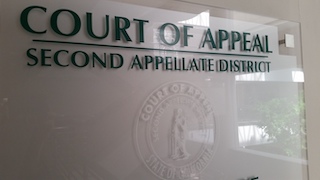Penal Code § 29610 prohibits a minor from possessing a firearm capable of concealment on his or her person. Penal Code § 25400(a)(2) prohibits a person from carrying a concealed firearm, which is very similar conduct.
In December, 2015, the Contra Costa County District Attorney filed a petition alleging Charles G., a juvenile, committed a felony violation of § 29610 for possession of a firearm by a minor; a felony violation of § 25400(a)(2) for having a concealed firearm on his person; and a misdemeanor violation for violating § 148(a)(1) for delaying, obstructing or resisting a police officer.
In August 2016, the judge sustained the petition but reduced the two felonies to misdemeanors. Charles G. was then committed to the Orin Allen Youth Rehabilitation Facility for a six-month regular program.
Charles appealed his conviction on two main grounds to the First Appellate District Court of Appeals in San Francisco. The scope of this article will be limited to his first argument that the juvenile court judge improperly found he violated both 25400(a)(2) and 29610. He argued that the judge should have found he only violated 29610 because it is the more specific statute and therefore, preempts 25400(a)(2).
The First Appellate District rejected Charles G.’s argument because a violation of 29610 is not necessarily or commonly a violation of 25400(a)(2) and therefore 29610 does not preempt 25400(a)(2).
 Second Appellate District Court of Appeals LA
Second Appellate District Court of Appeals LA
The appellate court nonetheless took time to discuss and review the general legal standards at issue when there are two statutes, one more general and one more specific, concerning the same conduct. The “Williamson rule,” first formulated by In re Williamson (1954) 43 Cal.2d 651, 654, starts the judicial interpretation of two such statutes. It is best summarized by another court, which said “[i]f a general statute includes the same conduct as a specific statute, the court infers that the Legislature intended that conduct to be prosecuted exclusively under the special statute.” People v. Murphy (2011) 52 Cal.4th 81, 86.
The First Appellate District then turned to comparing 29610 and 25400(a)(2). Section 29610 states: “A minor shall not possess a pistol, revolver, or other firearm capable of being concealed upon the person.” In other words, 29610 only prohibits a minor’s possession of a firearm and the firearm need not be actually concealed.
On the other hand, section 25400(a)(2) states, in relevant part, “A person is guilty of carrying a concealed firearm when the person . . . carries concealed upon the person any pistol, revolver or other firearm capable of being concealed upon the person.”
Thus, while 29610 involves a minor’s possession of a firearm that is capable of being concealed, 25400(a)(2) requires that a person carry and conceal the firearm.
Moreover, 29610 concerns possession, which has a broad meaning. To “possess “a firearm means “having ‘actual control, care and management of” the firearm. People v. Hurtado (1996) 47 Cal.App.4th 805, 810, fn. 4, quoting approvingly People v. Mijares (1971) 6 Cal.3d 415, 420, see also People v. Martin (2001) 25 Cal.4th 1180, 1186 [quoting Mijares].
Possession may be actual or constructive.
People v. Pena (1999) 74 Cal.App.4th 1078, 1083-1084. It does not require that a person be armed or that the weapon be within a person’s immediate vicinity.
Id. at 1084 [possession “does not mean the weapon must be carried on the defendant’s person”]. Rather, it encompasses having a weapon in one’s bedroom or home or another location under his or her control, even when the individual is not present at the location. See, e.g.,
In re Carleisha P. (2006) 144 Cal.App.4th 912, 915, 918 [weapon and ammunition found in juvenile’s bedroom].
Another important difference in the conduct required by the two statutes is concealment. Possession under section 29610 does not require concealment, whereas carrying under section 25400(a)(2) does.
Lastly, section 25400(a)(2) and 29610 address different purposes. 25400(a)(2) does not require ownership, possession, custody or control at as statutory element of the crime.
We bring this article to the reader’s attention perhaps most for the point that if one is to claim preemption of one statute by another more specific statute, look deeper. Evaluate each and every word of the statute before losing credibility by appealing a ruling and arguing that one was convicted of a redundant, duplicative law, suggesting double jeopardy (a Fifth Amendment violation), when that may be far from the truth.
The citation for the First Appellate District Court ruling discussed above is In re Charles G. (1st App. Dist., 2017) 14 Cal. App. 5th 945, 223 Cal. Rptr. 3d 350.
For more information about double jeopardy and carrying a concealed firearm, please click on the following articles:
 Second Appellate District Court of Appeals LA
Second Appellate District Court of Appeals LA